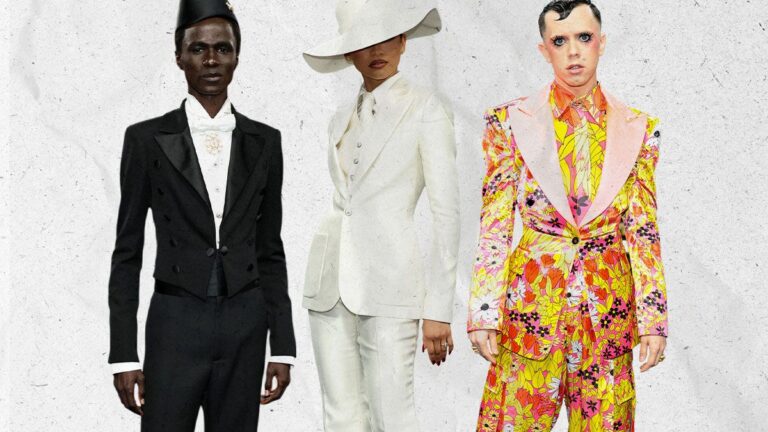Become a Vogue Business Member to receive unlimited access to Member-only reporting and insights, our Beauty and TikTok Trend Trackers, Member-only newsletters and exclusive event invitations.
By now, your feed has been flooded with photos from the 2025 Met Gala. You might have seen that Diana Ross walked the steps of the Metropolitan Museum of Art for the first time since 2003, and that Zendaya, who walked right behind her, looked fabulous in a white three-piece Louis Vuitton suit inspired by Bianca Jagger’s tailored wedding style. What you might have missed was that it was designed by Pharrell Williams, a co-chair at this year’s festivities, under his post as artistic director of menswear at Louis Vuitton. He also designed the looks seen on Sabrina Carpenter and Lisa as well as Jeremy Allen White? Chanel, too, reached across the aisle to dress some very stylish… men.
So what? You may be wondering. It’s true that this was not the first time that a Louis Vuitton designer blurs the lines between its binary gender product structure — the late Virgil Abloh did it once or twice, and womenswear designer Nicolas Ghesquière has certainly outfitted men from Cody Fern to Jaden Smith in the past. But what makes this moment significant is the bigger industry shift that this year’s Met Gala has shone a spotlight on. During a troubling time for the industry, fashion has found new, fresh potential in menswear. From starry ambassadors to viral looks and an increasingly more adventurous customer base, menswear seems to be where brands can look at for growth right now. The question is, what will this mean for the category?
‘Superfine’ men and those who dressed them
This year’s Met Gala celebrated the latest Costume Institute exhibition ‘Superfine: Tailoring Black Style’. The show, co-curated by Andrew Bolton and guest curator Monica L Miller, author of Slaves to Fashion: Black Dandyism and the Styling of Black Diasporic Identity, offers a cultural and historical study of Black style from the 18th century to today through the lens of dandyism.
It is the first exhibition at the Costume Institute to focus exclusively on menswear in over 20 years (the last one, in 2003, was ‘Bravehearts: Men in Skirts’). It is also the first show to examine fashion in the context of race. Bolton said at the press preview on Monday morning that the impetus behind the show was the passing of André Leon Talley, a wildly beloved and unabashed modern dandy. ‘Superfine’ also comes in the wake of the Black Lives Matters movement. The Costume Institute has acquired roughly 150 pieces by BIPOC designers since 2020, some of which feature in the new exhibition.
‘Superfine’ is a product of the times. It should be no surprise then that it is focused on menswear — the shocker, really, was that for the first time in years it was the men who dominated best-dressed lists. It feels like we have never paid as much attention to the way men dress, both in popular culture and in politics. Earlier this year, I wrote about the way labels are taking advantage of this newly found collective interest, related to the ‘internet boyfriend’ phenomenon. To summarise, people online can’t stop talking about attractive men, and brands are making sure they’re part of the conversation when the internet is feeling the thirst.
Think of Wales Bonner, the insider-favourite menswear label known for, well, its subtlety. Grace Wales Bonner, its designer, is cerebral and mostly press-shy, yet the brand made a statement at the Met, dressing co-chair and Vogue May cover star Sir Lewis Hamilton, photographer Tyler Mitchell, FKA Twigs, Jeff Goldblum, Omar Apollo and more. The investment return of a Met Gala outfit is not always easy to determine past its media impact value, but Wales Bonner, who has built a robust business primarily with menswear, certainly made a splash, her designs heading up most best-dressed lists. Her clothes are worn by many insiders, but by dressing Hamilton et al she might have found herself a broader base. Does what men wear on the red carpet today have the potential to translate into business, more than ever before?


